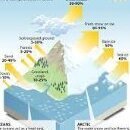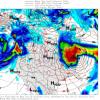All Activity
- Past hour
-
Nelson started following 11/8-11/10 First Snow and Lake Effect Event
-

11/8-11/10 First Snow and Lake Effect Event
Chicago Storm replied to Geoboy645's topic in Lakes/Ohio Valley
The massive meso-low currently at the southern tip of the lake is just cranking. Can't recall seeing something to that magnitude before around here. -

11/8-11/10 First Snow and Lake Effect Event
Malacka11 replied to Geoboy645's topic in Lakes/Ohio Valley
Looks pretty good out there over the layke atm -

2025-2026 New England Snow Recordkeeping Thread
bristolri_wx replied to bristolri_wx's topic in New England
@Torch Tiger all set check your personal messages. -

E PA/NJ/DE Autumn 2025 Obs/Discussion
Albedoman replied to PhiEaglesfan712's topic in Philadelphia Region
finally,some rain to keep the leaf piles from blowing away tomorrow. -
Down to 33. The roads are very wet, liable to be some icy travel if we get down to 24 as predicted.
-
11/8-11/10 First Snow and Lake Effect Event
KeenerWx replied to Geoboy645's topic in Lakes/Ohio Valley
Looks like it will be a relatively short punch here downwind in Jasper County. Not bought into the deterministic output for snow accumulation. But that’s just experience talking vs any science applied. Still think there’s a shot of an inch or so. Looking forward to seeing what comes of this further north and west into the city. -

2025-2026 New England Snow Recordkeeping Thread
bristolri_wx replied to bristolri_wx's topic in New England
@mreaves all set - check your personal messages. -
11/8-11/10 First Snow and Lake Effect Event
ChiTownSnow replied to Geoboy645's topic in Lakes/Ohio Valley
Giving us that Xtra westerly push? -

11/8-11/10 First Snow and Lake Effect Event
MJO812 replied to Geoboy645's topic in Lakes/Ohio Valley
Any good webcams out of Chicago ? -

E PA/NJ/DE Autumn 2025 Obs/Discussion
Maxwell03 replied to PhiEaglesfan712's topic in Philadelphia Region
Gnarly storms for this time of year. Jumped at a couple of these sudden bolts. -

11/8-11/10 First Snow and Lake Effect Event
Chicago Storm replied to Geoboy645's topic in Lakes/Ohio Valley
One of many… But this particular meso-low earlier this afternoon was quite significant. -

E PA/NJ/DE Autumn 2025 Obs/Discussion
Kevin Reilly replied to PhiEaglesfan712's topic in Philadelphia Region
Yep, periods of rain here with thunder and loud thunder 56f humidity 98% Looks like fairly strong thunderstorms in Delaware Bay in a line moving into south Jersey. -

2025-2026 New England Snow Recordkeeping Thread
bristolri_wx replied to bristolri_wx's topic in New England
@WxWatcher007 all set - check your personal messages. -

November 2025 general discussions and probable topic derailings ...
CoastalWx replied to Typhoon Tip's topic in New England
Still having trouble seeing their forecast. -

November 2025 general discussions and probable topic derailings ...
CoastalWx replied to Typhoon Tip's topic in New England
Yeah not happening -

Central PA Fall Discussions and Obs
canderson replied to ChescoWx's topic in Upstate New York/Pennsylvania
We missed being out in all the rain in the city thankfully! -
11/8-11/10 First Snow and Lake Effect Event
ChiTownSnow replied to Geoboy645's topic in Lakes/Ohio Valley
His mother was a mudah -
Mid to long range discussion- 2025
WinstonSalemArlington replied to wncsnow's topic in Southeastern States
-

11/8-11/10 First Snow and Lake Effect Event
MidwestChaser replied to Geoboy645's topic in Lakes/Ohio Valley
-
Thunder and lightning here. Not as crazy as where @CAPE is located, but much more rain than forecasted. Still more to arrive from my SW shortly.
- Today
-
Increasing loud thunder and 70F here in Greenville, N.C. as storms are moving rapidly from SW to NE. I take it this is the first of the two cold fronts moving through. Possible snow showers late tomorrow night which would be crazy for this time of year.
-
^Ok, I've plotted Tropical OLR and found that subsurface temperature anomalies near the thermocline (associated with sea level height) are actually more impactful. You see the correlation increase to almost double and the same goes for vs 850mb wind, 250mb wind, sea-level pressure. Matching Tropical Pacific OLR though, which is "Weak La Nina-like" right now, comes out to a -NAO in Nov and Dec then switches to +NAO for Jan and Feb. Curious how he got -NAO for Jan and Feb.
-
11/8-11/10 First Snow and Lake Effect Event
ChiTownSnow replied to Geoboy645's topic in Lakes/Ohio Valley
Keep on a pushing... -
Paul Roundy @PaulRoundy1 · 13h The algorithm is based entirely on outgoing longwave radiation data in the tropics. The OLR diagnostic algorithm is explained and assessed here: https://rmets.onlinelibrary.wiley.com/doi/abs/10.1002/qj.962 And the association with the extratropical circulation is diagnosed through the method of constructed analogs: https://journals.ametsoc.org/view/journals/mwre/141/7/mwr-d-12-00223.1.xml Since the algorithm does not include any explicit information about the ocean (it includes what is implicit in OLR anomalies), and since the OLR signal is projected forward based on how similar OLR signals moved in the past, it will do poorly when the ocean subsurface is undergoing strong changes. In the short term (e.g., next 2 months), the results are reasonable, but in this particular event, there is risk of El Niño being forced by strong subseasonal variability (February through May). Should that occur, the verification data would diverge from the forecast.
-
0.22" , still dzl at obs




